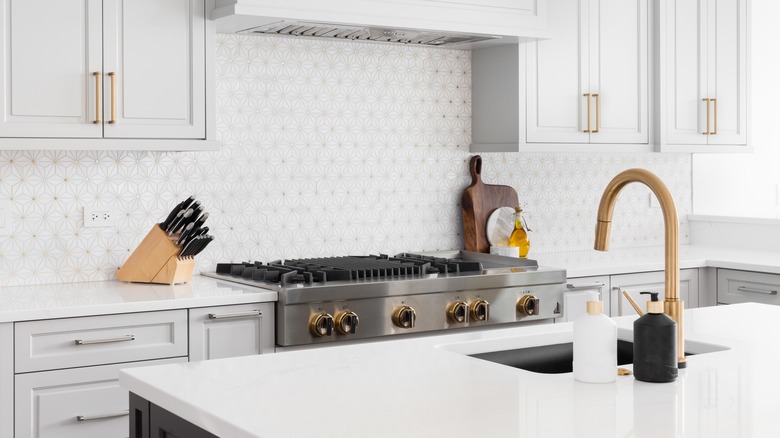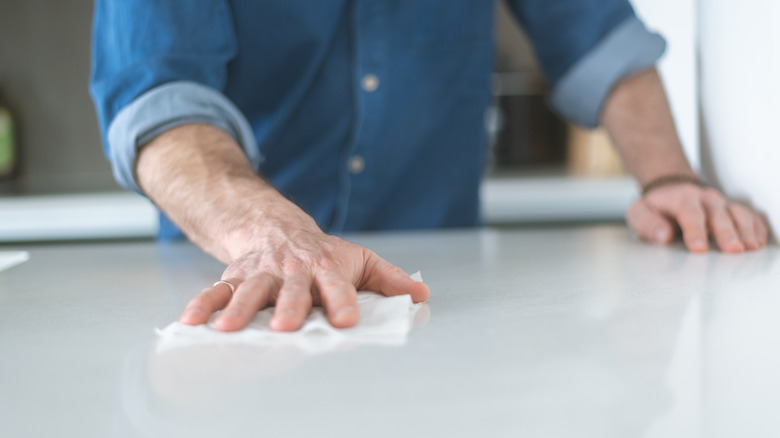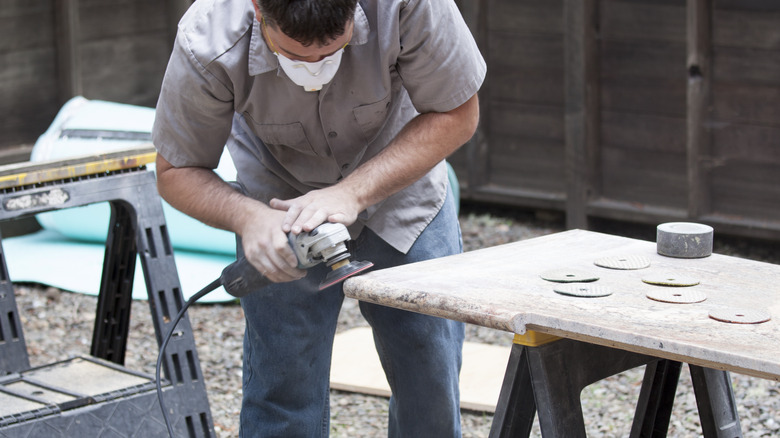The Top Mistakes Everyone Makes When Polishing Granite Countertops
We may receive a commission on purchases made from links.
Polishing granite countertops is crucial to maintaining their beauty and longevity, but it's often done incorrectly. Common mistakes include using the wrong polishing product, using everyday household cleaners, polishing on top of weak or deteriorating seals, making the surface too slippery, and polishing before properly sealing the granite. These errors can compromise the quality and appearance of your granite countertops. Even the technique you use can lead to a host of problems, such as streaks and dulling.
To avoid these mistakes, it's essential to understand the special requirements of granite. Although durable, if not well sealed, its porous nature means it can easily absorb liquids, leading to stains and damage. Interestingly, granite's composition varies, meaning no two slabs are identical in pattern or color. This uniqueness of each granite countertop style adds to its appeal but also demands tailored care.
It's essential to keep all these factors in mind when polishing. Also, remember, when polishing or cleaning granite or any natural stone surface, you should steer clear of abrasive pads. Rough sponges and wire brushes can scratch and damage the stone's finish, ruining its natural shine. Instead, always go for microfiber cloths. They're soft, won't scratch the surface, and are great at picking up dust and dirt instead of just pushing it around. This way, you keep your stone surfaces looking spotless and well-maintained.
Using the wrong products can cause damage
Over time, even well-sealed granite can become vulnerable to acidic substances, so harsh chemicals are a no-go. Regular sealing and using granite-friendly products play a critical role in preserving granite's resilience and luster. Be careful about its contents if you're using a general polish on your countertops. Polishes with high acid levels, especially those with vinegar or ammonia, can be harsh on granite. They don't just clean; they can break down the sealant, causing stains. Once that happens, it's often permanent. You'll need to use polishes specifically designed for granite to achieve the best results. For example, products like Stone Care International Granite & Stone Polish and Weiman Granite Cleaner & Polish are formulated to highlight granite's natural sheen without causing harm.
When polishing granite, starting with the right cleaning approach is important. Regular household cleaners just won't cut it. They might break down the sealant and seep into the granite's porous surface, leading to potential damage. So, before you even think about polishing, clean the surface with products specifically designed for granite and natural stone, like Granite Gold Daily Cleaner. This ensures your granite gets the gentle yet effective treatment it needs.
Sealing after polishing is a big no-no
Polishing before sealing is another common mistake that can have lasting consequences for granite countertops. Remember, sealing should always come before polishing. The sealant penetrates the stone's pores, creating a protective barrier. Polishing before sealing disrupts this process, resulting in an uneven seal. This leaves the granite vulnerable to stains and damage and diminishes the polish's effectiveness. Another frequent mistake in maintaining granite countertops is polishing over weak or deteriorating seals. These surfaces need regular sealing to guard against stains and damage. Always check the seal's integrity before you start polishing. An easy test is to sprinkle a few drops of water on the surface. If the water beads, the seal's good. But if it soaks in, it's a clear sign you need to reseal before polishing.
Lastly, remember to maintain the right balance in polishing to help preserve the aesthetic appeal of your granite surfaces. Over-polishing can lead to a superficially glossy but ultimately artificial look, detracting from the natural elegance of the stone. Essentially, less is often more. Aim for a soft sheen that enhances, rather than overshadows, the inherent beauty of the granite. Use a small amount of polish and apply it in a gentle, circular motion. This method ensures an even application and prevents buildup. After applying the polish, buff the surface with a clean microfiber cloth to bring out a high shine. This extra step removes residual polish and enhances the stone's natural luster.


